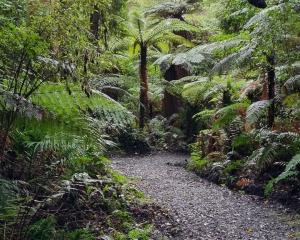
However, there was one exhibition inside the galleries that really captured my interest— "Alasdair Gray, Spheres of Influence I", held in 2015.
I wandered around the neoclassical building, admiring the sheer variety of the artwork on display. You see, the exhibition was as much focused on Scottish artist Alasdair Gray as it was the artists who influenced and informed Gray’s work. I was captivated by the striking lines of Albrecht Durer, the lyricism of Aubrey Beardsley, and the sheer vibrance of William Blake. I traced the influence of these artists — the strong lines, the dynamism, the figurative power — in Gray’s work and instantly felt a connection to Gray.

Gray’s upbringing was somewhat idiosyncratic. His parents were swept up by Fabian, non-revolutionary socialism, and they nurtured a love of imagination and adventure in the young boy. Consequently, Gray was a socialist and Scottish nationalist his whole life, with these ideals often permeating his creative outputs. He lived in Glasgow all his life, except for a four-year stint in Yorkshire during the Second World War. Gray became something of an institution in Glasgow — he was Glasgow.
I was introduced to Gray’s writing via the novel Lanark, first published in 1981. I was 22 years old, and studying for my honours degree in English literature at Otago University. Unbeknown to me, I was rather ill at this time. My appendix was festering away inside my abdominal cavity, spreading tendrils of infection to all my other organs. And so my first reading of Lanark will forever be tainted with the first flush of disease; as I read the book, I alternated between cold sweats and rich fevers. I was exhausted, disoriented, itchy and sore. I felt like a character in the novel itself, afflicted by dragonhide and despair.
You see, Lanark is a glorious, grim, complex novel that blends, to quote the critic David Pringle, "not only autobiographical realism, but low comedy, afterlife fantasy, scattershot satire, nightmarish allegory, self-referential metafiction, tender eroticism, lunatic scholarship and profuse literary borrowings."
Set in the city of Unthank, a dystopian version of Glasgow, Lanark follows the protagonist, Duncan Thaw, as he confronts myriad challenges within a decaying, dreamlike world. Structured in four parts (although not presented in chronological order), the novel grapples with themes of morality, identity, and social deterioration.
Lanark opens with a young man waking up alone in a train compartment, his memory curiously blank. Upon arriving in the lightless purgatory of Unthank, the man, (who has christened himself "Lanark"), discovers that the city’s populace suffer from strange and contagious diseases, often before disappearing altogether. Lanark himself is plagued by "dragonhide", a scaly skin condition that represents his inability to love. In an attempt to flee the city’s decaying grasp, Lanark becomes entangled in the bureaucratic labyrinth of the Institute, a medical facility tasked with treating various allegorical maladies.
"Glasgow is a magnificent city," says McAlpin, a character in Lanark, "Why do we hardly ever notice that?" Lanark replies: "Because nobody imagines living here ... think of Florence, Paris, London, New York. Nobody visiting them for the first time is a stranger because he’s already visited them in paintings, novels, history books and films. But if a city hasn’t been used by an artist, not even the inhabitants live there imaginatively."
Gray was determined to establish Glasgow firmly within the artistic and cultural landscape. His books were mainly set in Glasgow and other areas of Scotland, and through his writing, Gray helped to strengthen and widen Glasgow’s literary scene, conjuring up visions of the city beyond the dark ganglands of crime fiction.
Gray revivified Scottish literature and his influence is evident in myriad Scottish writers, including Janice Galloway, Ian Banks, Irvine Welsh, and Alan Warner. His writing was deeply autobiographical, witty, intelligent and observant.
Gray’s art was as sharp, vibrant, and distinctive as his writing. I particularly love his beautiful sprawling murals, such as that painted on the ceiling at the Òran Mór arts venue in Glasgow. There exist recognisable motifs throughout his work; bearded men and Amazonian women strut and pose; doves soar above the populace; dogs bark; a foetus is imprisoned inside a skull. And there is usually always a funny little self-portrait of Gray himself hidden somewhere within the piece.
Gray was a firm Scottish nationalist and republican, and popularised the epigram "Work as if you live in the early days of a better nation" (paraphrased from a poem by Canadian poet Dennis Lee). He was warm and idiosyncratic, and at times embodied the stereotype of the "mad artist", with his thick spectacles and clouds of frizzy hair. He had a high-pitched laugh, was often late, and frequently mislaid his artistic manuscripts on drunken benders. How glorious.
Alasdair Gray died on December 29, 2019, at the age of 85. I will leave you with my favourite quote from Gray, from his novel Poor Things: "Truth, beauty and goodness are not mysterious, they are the commonest, most obvious, most essential facts of life, like sunlight, air and bread."
- Jean Balchin is an ODT columnist who has just started a new life in Edinburgh.












